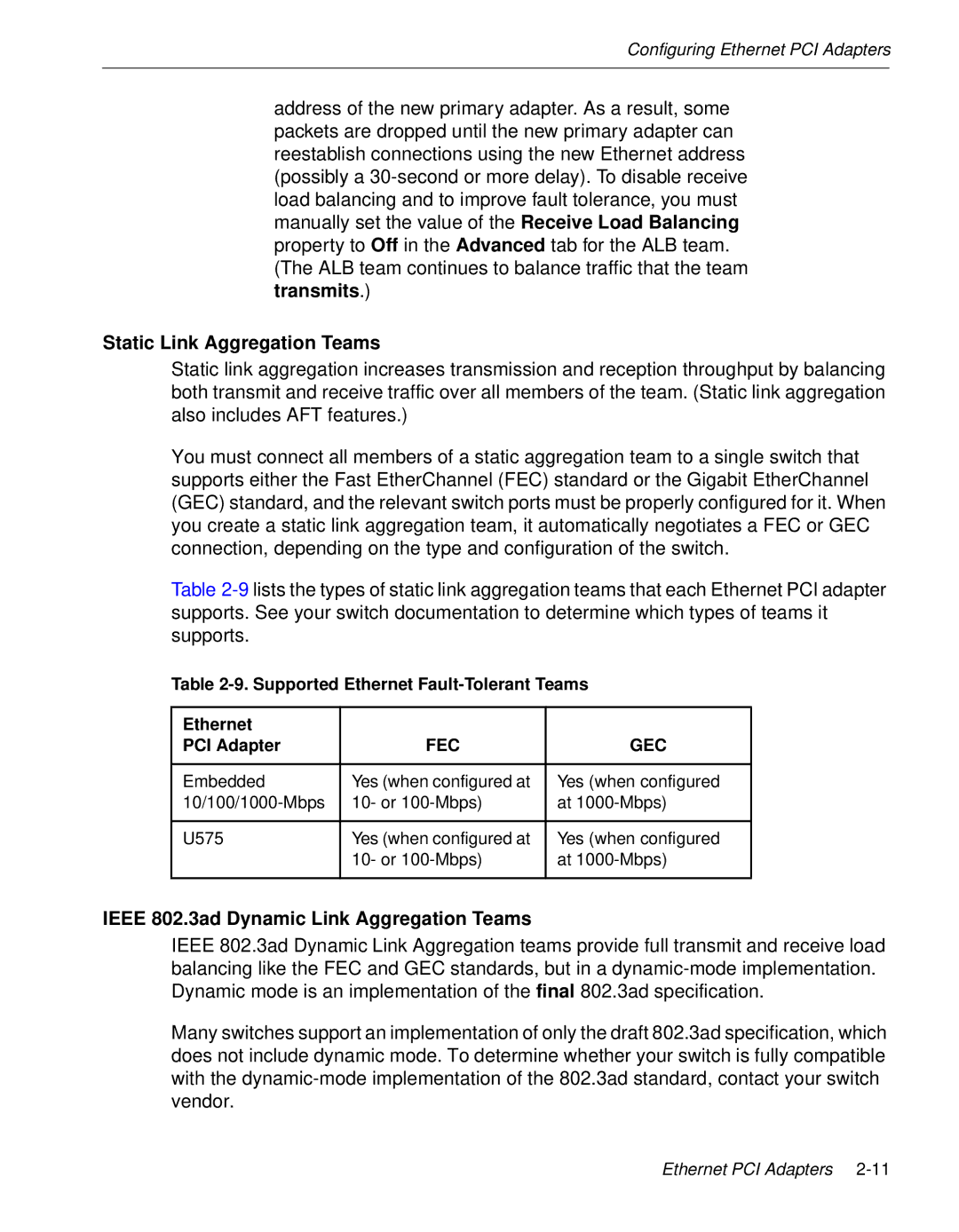Configuring Ethernet PCI Adapters
address of the new primary adapter. As a result, some packets are dropped until the new primary adapter can reestablish connections using the new Ethernet address (possibly a
Static Link Aggregation Teams
Static link aggregation increases transmission and reception throughput by balancing both transmit and receive traffic over all members of the team. (Static link aggregation also includes AFT features.)
You must connect all members of a static aggregation team to a single switch that supports either the Fast EtherChannel (FEC) standard or the Gigabit EtherChannel (GEC) standard, and the relevant switch ports must be properly configured for it. When you create a static link aggregation team, it automatically negotiates a FEC or GEC connection, depending on the type and configuration of the switch.
Table
Table
Ethernet |
|
|
PCI Adapter | FEC | GEC |
|
|
|
Embedded | Yes (when configured at | Yes (when configured |
10- or | at | |
|
|
|
U575 | Yes (when configured at | Yes (when configured |
| 10- or | at |
|
|
|
IEEE 802.3ad Dynamic Link Aggregation Teams
IEEE 802.3ad Dynamic Link Aggregation teams provide full transmit and receive load balancing like the FEC and GEC standards, but in a
Many switches support an implementation of only the draft 802.3ad specification, which does not include dynamic mode. To determine whether your switch is fully compatible with the
Ethernet PCI Adapters
